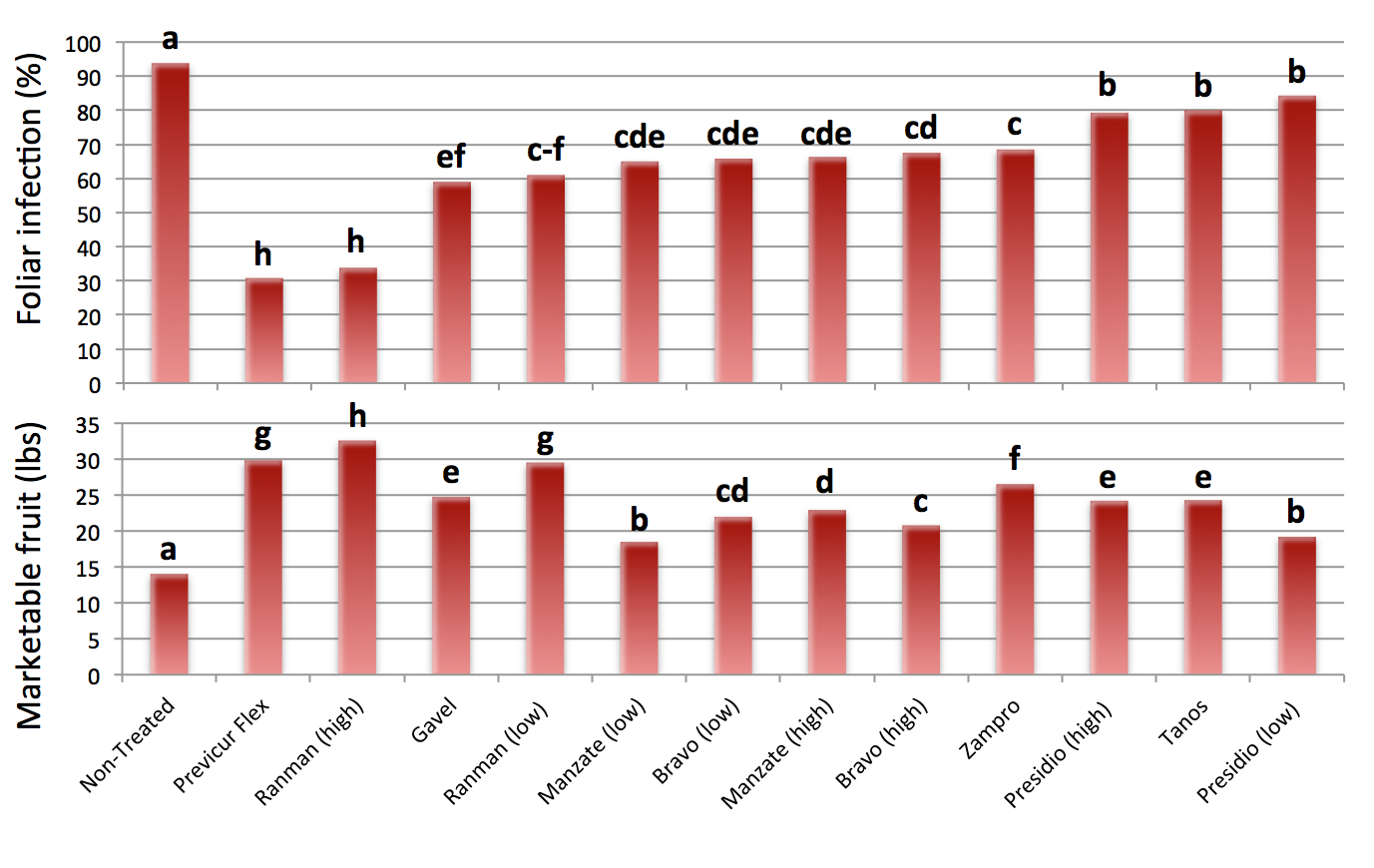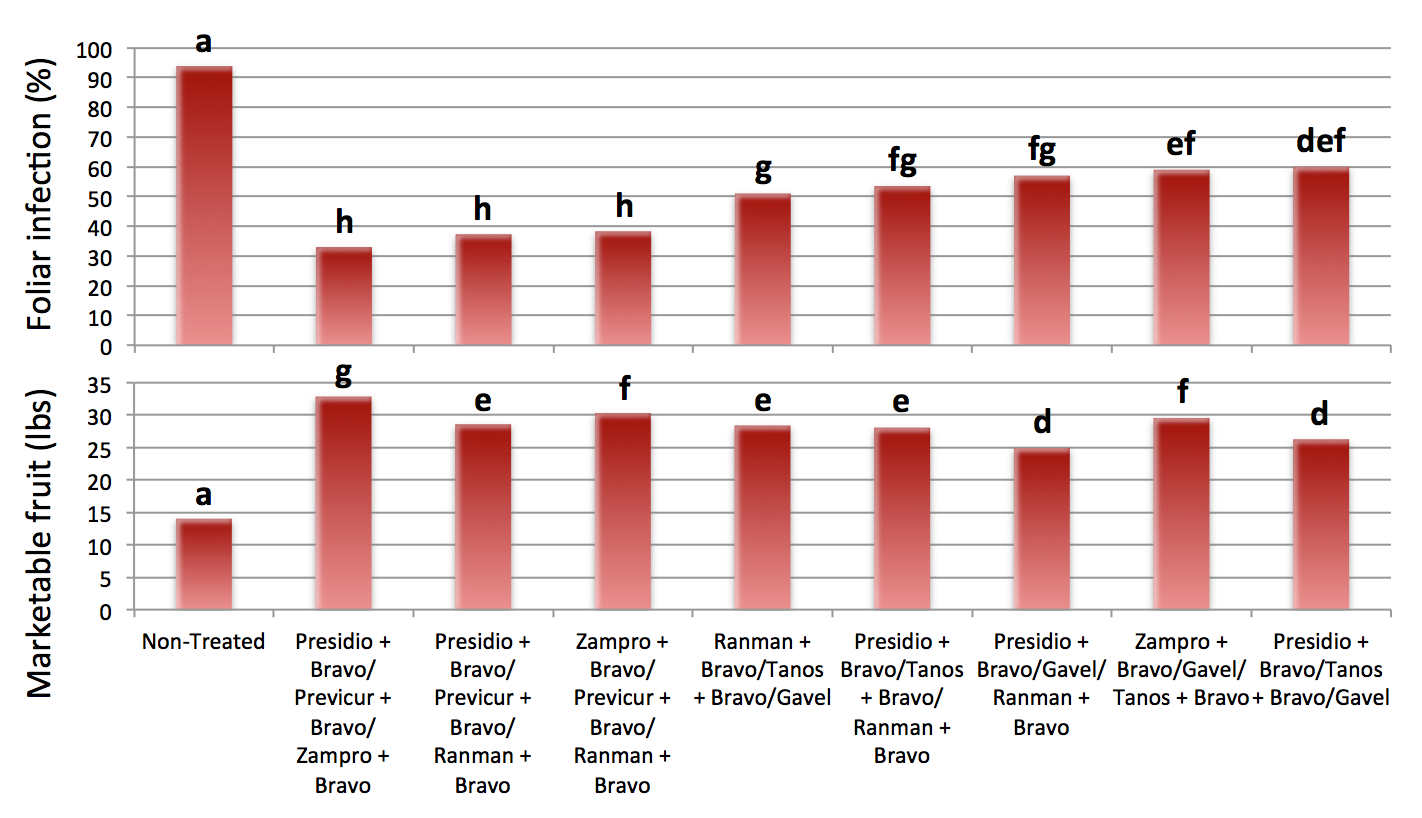Control Options for Cucurbit Downy Mildew in North Carolina
go.ncsu.edu/readext?303481
en Español / em Português
El inglés es el idioma de control de esta página. En la medida en que haya algún conflicto entre la traducción al inglés y la traducción, el inglés prevalece.
Al hacer clic en el enlace de traducción se activa un servicio de traducción gratuito para convertir la página al español. Al igual que con cualquier traducción por Internet, la conversión no es sensible al contexto y puede que no traduzca el texto en su significado original. NC State Extension no garantiza la exactitud del texto traducido. Por favor, tenga en cuenta que algunas aplicaciones y/o servicios pueden no funcionar como se espera cuando se traducen.
Português
Inglês é o idioma de controle desta página. Na medida que haja algum conflito entre o texto original em Inglês e a tradução, o Inglês prevalece.
Ao clicar no link de tradução, um serviço gratuito de tradução será ativado para converter a página para o Português. Como em qualquer tradução pela internet, a conversão não é sensivel ao contexto e pode não ocorrer a tradução para o significado orginal. O serviço de Extensão da Carolina do Norte (NC State Extension) não garante a exatidão do texto traduzido. Por favor, observe que algumas funções ou serviços podem não funcionar como esperado após a tradução.
English
English is the controlling language of this page. To the extent there is any conflict between the English text and the translation, English controls.
Clicking on the translation link activates a free translation service to convert the page to Spanish. As with any Internet translation, the conversion is not context-sensitive and may not translate the text to its original meaning. NC State Extension does not guarantee the accuracy of the translated text. Please note that some applications and/or services may not function as expected when translated.
Collapse ▲Cucurbit downy mildew, caused by the oomycete Pseudoperonospora cubensis, is a yearly concern for North Carolina cucurbit growers. Having the most effective fungicide products at hand to control this disease is key since no resistant cultivars are available for disease control. In addition, the reproductive nature of this pathogen allows it to quickly overcome fungicides when such products are applied without the proper active ingredient rotations, thus, having the latest results on fungicide efficacy is an invaluable tool for growers. To address this need, the Vegetable Pathology Lab at NC State conducted several fungicide efficacy trials last year that provided the needed information to manage cucurbit downy mildew this year in North Carolina.
One trial was conducted at the Cunningham Research Station in Kinston, NC, using Vlaspik cucumbers, which are susceptible to downy mildew. Fungicide treatments were applied on a 7-day interval from September 9 to October 14 and included the following products:
| Product | Active Ingredient | Fungicide Group | Pre Harvest Interval |
| Previcur Flex 6F | Propamocarb | 28 | 2 |
| Ranman 400SC | Cyazofamid | 21 | 0 |
| Gavel 75WP | Mancozeb + Zoxamide | M + 22 | 5 |
| Zampro 525SC | Ametoctradin + Dimethomorph | 45 + 40 | 0 |
| Presidio 4SC | Fluopicolide | 43 | 2 |
| Tanos 50WP | Famoxadone + cymoxanil | 11 + 27 | 3 |
| Bravo Weather Stick 6SC | Chlorothalonil | M | 0 |
| Manzate Pro-Stick 75DG | Mancozeb | M | 5 |
To assess individual efficacy of each product, fungicides were applied as single-treatments at high and low rates following label guidelines (Figure 1). Details of rates used for each product and how applications were made can be found here. Please note that this was done for research purposes only to provide our stakeholders with the efficacy information they need, however, growers are strongly recommended to rotate fungicides in a spray program to avoid generating fungicide-resistant isolates. The trial was initiated late in the growing season to ensure availability of inoculum and to quickly destroy the trial once completed to eliminate it as a source of inoculum. The pathogen requires a host to live, it cannot persist in the soil and thus, it cannot survive winter temperatures in the field.
Disease severity and marketable fruit yield were recorded at the end of the trial on October 17 for each treatment and are shown in Figure 1. Treatments labelled with the same letter are not statistically different. For example, all treatments not labelled with the letter a, which corresponds to the non-treated control, presented significantly less cucurbit downy mildew disease.

Figure 1: Fungicide efficacy trial for cucurbit downy mildew control using single products at high and low rates
Disease pressure for the trial was significant (>90%), which allowed for identification of effective treatments. Previcur Flex (1.2pt) and Ranman (2.75 fl oz) applied at high rates provided the highest disease control of all treatments and presented approximately 30% disease at the end of the trial. Other treatments also provided good to moderate control of cucurbit downy mildew and presented approximately 60-70% disease.
A second set of treatments were included in the trial and corresponded to the same products shown in Figure 1 but applied in a rotation program to determine which fungicide rotations are most effective in controlling cucurbit downy mildew (Figure 2). All products, with the exception of Gavel since it contains mancozeb, were tank-mixed with Bravo Weather Stick and alternated following recommendations to prevent appearance of fungicide-resistant isolates. Find rates used for each product and how applications were made. Disease severity and marketable fruit yield were recorded as described above, and as in Figure 1, treatments in Figure 2 labelled with the same letter are not statistically different.

Figure 2: Fungicide efficacy trial for cucurbit downy mildew control using products in a rotation program
Treatments alternating Presidio, Previcur Flex, Zampro, and Ranman, provided the highest level of disease control and presented approximately 30% disease at the end of the trial. Other programs also provided good control of cucurbit downy mildew and presented approximately 50-60% disease. It is interesting to note that in this trial Presidio, used as a single product, provided little control; however, in the same trial when Presidio was used as an initial spray in a spray program that alternated other products with good to moderate performance, disease control was achieved.
It is important to remember that Pseudoperonospora cubensis, the causal agent of cucurbit downy mildew, can generate fungicide resistance very quickly. Presidio has provided excellent control of the disease in past years and its only recently that we have observed loss of sensitivity to this product in pathogen populations. It is critical that growers alternate products in their fungicide programs to protect the few chemistries we have that are still highly effective in controlling downy mildew. Because the pathogen can travel long distances and it reproduces profusely during the growing season, if fungicide-resistant isolates are generated due to misuse of fungicides, they could spread quickly to other regions. Using fungicides appropriately to avoid generating fungicide-resistant isolates will ensure the long term profitability of our cucurbit industry.
When planing your spray program, make sure you alternate fungicide groups of products to avoid generating fungicide-resistant isolates. You can find some example products on our Cucurbit Downy Mildew fact sheet. Growers are encouraged to read the Southeastern US Vegetable Crop Handbook for the latest fungicide recommendations.
If you think you have cucurbit downy mildew in your cucurbits please contact your local Extension Agent and send photos and/or physical samples to the Plant Disease and Insect Clinic for confirmation and reporting to the Cucurbit Downy Mildew ipmPIPE.


